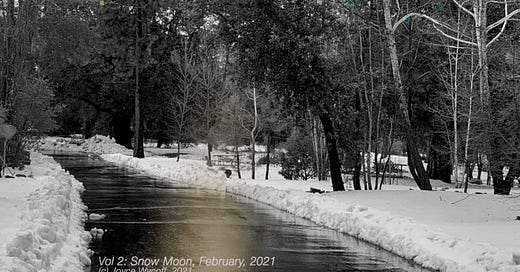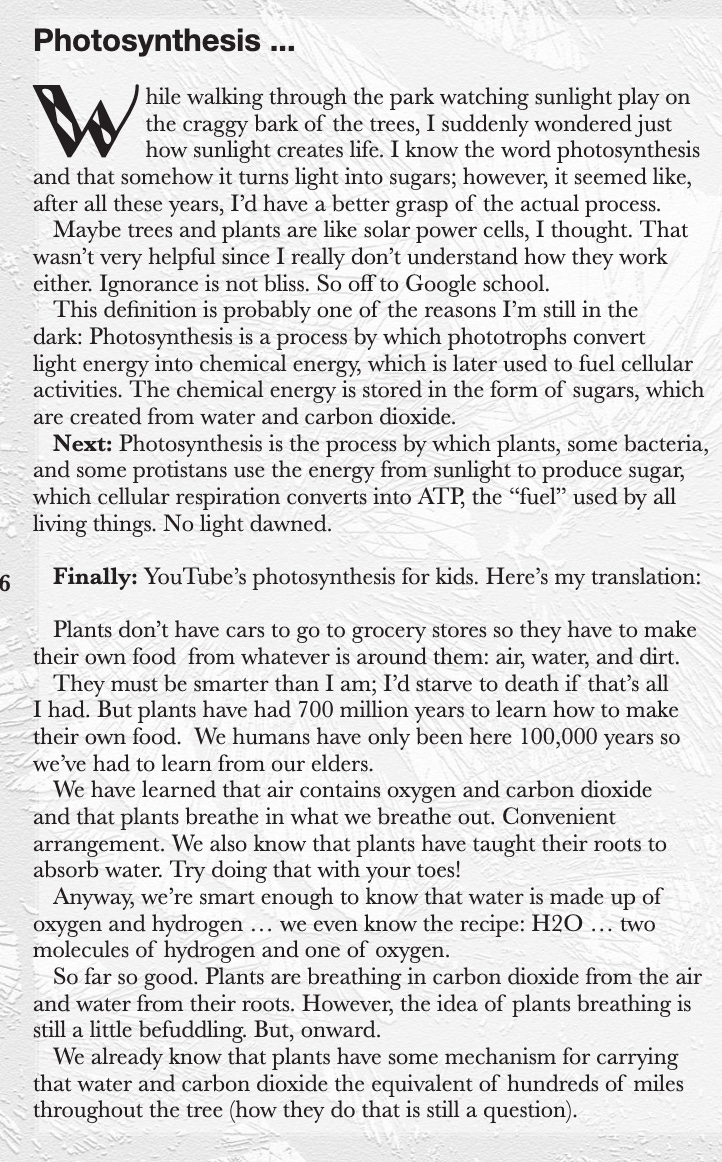My thumb is not green. However, there is one particular plant that withstands my neglect … at least for awhile. Right now this latest in a long line of celery plants seems to be particularly hardy. I love watching the bottoms of celery stalks sprout roots in a jar of water. Within a few days tiny little shoots peek into the world.
Normally, their life span is short. They get soggy in too much water or I forget to add water and they wither. But this one added cheer to my life for most of 2024. It seems to like its west facing window and is quite clear in its request for water. For me, though, those green leaves continue to baffle me even though I once made a conscientious effort to understand photosynthesis.
A few years ago, I was in my magazine phase, producing The Granary Tree, a quarterly magazine about my travels and fascinations. (It lasted four issues before I transitioned to a less on-the-move life.) During that time, I realized that I understood the word “photosynthesis” and basically knew it was the process plants use to live. However, my brain balked when trying to understand just how it actually worked.
I thought finding out would mean a simple peek into Wikipedia, however, it was a more extended process which I share in screen shots from The Granary Tree, volume 2.
Each of the four issues of The Granary Tree are available as digital magazines
as special thanks for paid subscribers. (Link to this issue in footer.)
It amazes me how much *we* (collectively across time and the planet) know about how our world works … as opposed to just a handful of centuries ago, people believed geese came from goose trees. Here’s a cute video that will tell you the story so we can both feel smarter than they were even though I’m still barely hanging on to the photosynthesis thing.
Geese that grow on trees?
This amusing (and enlightening) video comes from our own Substacker
referring to his book:











Photosynthesis or friendosynthysis?
You help me grow!
Fascinating reading that’s great for stirring the brain cells a bit but not too much. As for your stomata, they must have differentiated cells like we do in other to carry out different tasks for the plants benefit. I read somewhere(probably Bluesky)that humans and plants share more DNA than we would expect and that plants are very social beings. As I was reading the article it reminded me of the movie AVATAR.